Life Extension Magazine®
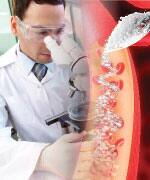
The research is conclusive—the longer you wait to tame age-related blood sugar increases, the greater your odds of succumbing to diabetes and its associated increased risk of heart attack, stroke, kidney failure, cancer, and blindness.1-3 For the majority of aging individuals,urgent action is needed.1,2
The public has not yet recognized the magnitude of damage inflicted after consumption of what most consider only a moderate amount of starch or sugar.
A widely publicized study showed that drinking just one 12-ounce sugar-sweetened soda daily resulted in an 18-22% increased risk of type II diabetes.4 While health-conscious people may avoid sodas, there are so many glucose-spiking foods in our diets that virtually none of us are immune.
Hard science reveals that fasting blood sugar above 85 mg/dL is associated with increased risks of death and disease. Unfortunately, most adult glucose levels are well above this range.1,2,5
Aging humans should take assertive steps before eating carbohydrates to impede the absorption of glucose into their bloodstream. Just as important, however, is the need to suppress excess production of glucose in our liver and to improve uptake of blood glucose into our muscle cells as opposed to it being stored as fat.
The breaking news for those who want to avoid drugs is the discovery of three plant-derived nutrients that target underlying reasons why 80% of American adults today have higher than optimal glucose levels.6
The July 3, 2013 issue of the Journal of the American Medical Association (JAMA) examined the impact of fructose on human health.7
High-fructose corn syrup represents over 40% of caloric sweeteners added to foods and beverages. It’s often the sole caloric sweetener in soft drinks in the United States.8
The digestion and metabolic effects of fructose differ from that of glucose.7 Fructose is metabolized in the liver in a way that favors formation of new fat (lipogenesis).7 Unlike glucose, fructose does not induce normal satiety signals. Fructose thus contributes to overeating that can lead to weight gain.7 The increased use of high-fructose corn syrup in the US mirrors the rapid increase in obesity.9
The JAMA review of fructose first explained the mistaken belief in the 1990s that obesity was caused by over-consumption of dietary fat.7 Back then, high sugar intake was considered neutral and possibly even protective against obesity by displacing dietary fat.7
A decade later, the American Heart Association urged drastic reductions in sugar consumption because of concern it was contributing to weight gain.7 Experts now argue that sugar intake is the most important cause of what has become a worldwide epidemic of diabetes and obesity.
Focusing on fructose, the JAMA review described the adverse impact of high fructose consumption that includes fatty liver, insulin resistance, elevated triglycerides, and fat deposition into tissue.7
The JAMA review then discussed how fructose contained in fruit has not shown these unfavorable effects.7 They report that even when human subjects consume huge amounts of fructose in fruit, there have been beneficial effects seen on blood pressure, lipids, insulin, and body weight. The reason is the slow digestion rate of whole fruit compared to a sugar-sweetened beverage.
The JAMA review pointed out that excess intake of refined sugars and high-glycemic starches plays a significant role in obesity and concluded that “…public health efforts should focus on reducing intakes of all highly refined processed carbohydrates, not just refined sugar.”7
This review, published in an internationally recognized medical journal, accompanied by corroborating research data from other studies, is a wakeup call for aging humans to initiate definitive steps to impede the rapid absorption of sugar into their bloodstream.7-10
Why Most of Us Have Too Much Glucose
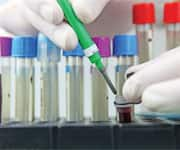
Elevated blood sugar is blamed on eating too many sweets. Yet type II diabetes can be caused by excess production of glucose internally as well as overconsumption of high-glycemic carbohydrates.
To put this in perspective, look at the primitive conditions that existed throughout 99% of human history. Ancestral human diets typically consisted of low levels of refined carbohydrates…mainly just protein and fat from whatever the day’s hunt yielded along with fibrous vegetables.11 Yet our bodies require a continuous supply of glucose to sustain brain cell energy production.12
Once blood glucose levels drop below 50 mg/dL we become severely hypoglycemic and are at significantly increased risk for adverse clinical outcomes and death!13 So we adapted a survival mechanism by which our liver produces glucose from protein (and sometimes fat) in a process called gluconeogenesis.
Gluconeogenesis served us well when food was scarce, but in today’s world of boundless calorie abundance, this glucose-generator conspires to spike our blood sugar to dangerous levels.
The medical profession has yet to recognize the magnitude of this epidemic problem. Conventional doctors wait until fasting glucose crosses the 125 mg/dL threshold to label you as diabetic and only then recommend treatment. That is, if you’re lucky enough to have a watchful physician. According to the Centers for Disease Control, the incidence of type II diabetes remains dangerously underreported and underdiagnosed.14
It is thus up to individuals to take control of their bodies and incorporate proven methods to reduce and protect against the devastating impact of surplus blood glucose.
Fortunately, researchers have identified three natural ingredients that can safely reduce the amount of extra sugar produced in the liver, reduce the rate of sugar absorption, and facilitate transporting sugar out of the bloodstream into energy-producing cells. Each of these three natural ingredients acts independently and complementarily to protect against age-related increases in blood sugar and insulin levels.
Together with lifestyle and behavioral changes, compounds that target mechanisms involved in excess blood sugar are vital if we are to achieve optimal longevity.
What You Need to Know
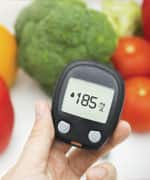 |
Broad-Spectrum Support For Blood Sugar
- You are at risk for vascular disease if you don’t keep your blood glucose under control; even “high normal” levels are dangerous.
- Mainstream medicine is often not concerned with blood sugar levels that are over 85 mg/dL yet not in the “diabetic range.”
- A novel combination of three nutrients offers multiple mechanisms to support healthy blood sugar and insulin levels, without many of the side effects associated with synthetic medications.
- These supplements act in ways quite similar to the best existing and emerging drugs used to control blood sugar, but in a gentler, safer fashion.
- Sorghum slows starch digestion and activates PPAR-gamma, an insulin-sensitizing metabolic sensor in your cells.
- Mulberry leaf extract slows digestion of starch fragments and increases activity of cellular insulin sensitizers to facilitate better glucose uptake by muscle and liver.
- Phloridzin, from fruit tree bark, blocks the carrier proteins that absorb glucose into your body from your intestine and kidneys.
Natural Ingredient #1:
Mulberry Leaf Extract
An extract from the mulberry leaf has been used in Chinese traditional medicine to treat various problems, particularly those involving blood sugar control.21,24 Scientists have discovered evidence to validate this traditional use.24 It turns out that mulberry works to support healthy blood sugar levels via several effective mechanisms.
How Vital Life Processes Can Work Against Us
 |
Three necessities vital to sustaining human life are:
- Oxygen
- Energy
- Blood
If our bodies did not evolve robust capacities to ensure continuous oxygenation, energy metabolism, and blood pressure, we would have long ago perished.
As we age, however, these vital life processes work against us in the forms of hypertension, excess oxidation, and too much energy-substrate, i.e. glucose.
Everyone knows that high blood pressure is dangerous, yet many people walk around with higher-than-optimal readings (above115/75).15 Antioxidants suppress damaging oxidative reactions, but the general public is largely in the dark about which nutrients are needed to adequately suppress free radicals.16
More than 80% of American adults have fasting glucose over 85 mg/dL. Even more dangerous are after-meal surges in blood glucose/insulin that damage our endothelium and increase disease risk.6,17,18
Fortunately, there are nutrients that when taken before carbohydrate-containing meals can blunt the after-meal glucose surge, reduce excess production of glucose in the liver, and facilitate transport of glucose out of the blood into energy-producing cells.19-23
Inhibiting The Alpha-Glucosidase Enzyme
DNJ (1-deoxynojirimycin) is a component found in mulberry that can fool the body into believing that it is a sugar molecule.24
By “mimicking” sugar, DNJ binds to the alpha-glucosidase enzyme whose job is to “look” for starches in your intestines to break them down into sugars.24,25 When DNJ binds to alpha-glucosidase, the body can’t process as much starch, so this starch (and its calories) passes through the intestine, rather than being absorbed into your blood as sugar.24,26
The binding of DNJ to alpha-glucosidase thus allows you to reduce the sugar load in your bloodstream that is created every time you eat a starchy meal. Mulberry inhibits starch-related blood sugar rise in a similar fashion as acarbose, a prescription medication used for blood sugar control.27 Acarbose helps reduce after-meal blood sugar spikes by inhibiting alpha-glucosidase. Studies demonstrate that mulberry leaf extracts reduce after-meal rises in glucose.24,28
Daily use of mulberry leaf extracts can even delay the onset of type II diabetes in experimental models, significantly lowering after-meal insulin and glucose levels and delaying the development of diabetes.28
The DNJ in mulberry also reduces the production of excess glucose in the liver (gluconeogenesis) as does the anti-diabetic drug metformin.29,30 Because around 47% of fasting sugar (after 14 hours of fasting) comes from the liver pumping out glucose, this inhibition can significantly lower the amount of excess glucose circulating in your bloodstream.31
A human study compared mulberry with a leading anti-diabetic drug called glyburide.32 This drug lowers glucose by boosting pancreatic production of insulin.33 We at Life Extension have long warned against this sulfonylurea drug because excess insulin boosts cancer risk and damages cells throughout the body.
In this experiment, 24 people with type II diabetes were treated either with mulberry extract or with glyburide for 30 days.32 The researchers found that mulberry leaf extract lowered fasting blood sugar significantly more than glyburide.32
The patients in the mulberry-supplemented group had an impressive 27% drop in their fasting blood sugar, from 153 mg/dL down to 111 mg/dL. Those taking glyburide saw only an 8% drop in their fasting blood sugar levels, from 154 mg/dL to 142 mg/dL. Patients taking mulberry saw their hemoglobin A1c blood level (a long-term measure of blood sugar levels) fall 10%.32 Those taking glyburide showed no decrease at all.
And the health benefits of mulberry did not stop with reducing blood sugar levels. The study showed that mulberry also had a positive impact on lipid profiles such as cholesterol that affect cardiovascular health. Those treated with mulberry showed a 12% decrease in total cholesterol and a 16% decrease in triglycerides. In the glyburide group, there was no real improvement in any of the lipid measurements from baseline.32
Patients taking mulberry saw their protective HDL levels rise by a significant 18%, compared to just 3% in the glyburide group.32 Raising protective HDL levels has been a huge research target for the leading pharmaceutical companies and so far their efforts have failed. Mulberry clearly demonstrated its ability to improve both metabolic and cardiovascular markers without boosting insulin levels, in contrast to the insulin-boosting drug glyburide.
In another impressive human trial, volunteers were given a mulberry leaf extract enriched with additional DNJ content. After taking the mulberry extract,the patients drank water containing 50 grams (nearly 2 ounces) of sugar.20 Mulberry extract suppressed the expected rise in glucose and kept insulin levels safely low, even in the face of this impressive ingestion of pure table sugar.
Additional human research shows that mulberry extract improves lipid profiles in non-diabetic volunteers as well. One study of non-diabetic people focused on those with mild lipid abnormalities who had tried to improve their lipids with diet and failed.34 The results showed that 280 mg of mulberry leaf extract three times a day decreased triglycerides by 10.2% at 4 weeks and 12.5% at 8 weeks. By the end of the 12-week study, total cholesterol was down by 4.9%, triglycerides had fallen by 14.1%, and LDL had decreased by 5.6% from baseline values. Furthermore, beneficial HDL was increased by 19.7%.34
A similar study involved a group of subjects who started out with very high triglycerides averaging 312 mg/dL, more than double the upper limit of optimal.24 In this study, subjects took the DNJ-rich mulberry extract (12 mg three times daily) before meals for 12 weeks. By the end of the study, the mean triglyceride level had fallen to 252 mg/dL, which is still in the danger range. In 20% of the subjects, however, triglycerides fell to below 150 mg/dL—a reduction greater than 50%!24 There was a significant lowering in small or very low density LDL-cholesterol particles, which are especially dangerous because they are readily oxidized and are strongly associated with atherosclerosis.24
Mulberry’s Mechanisms of Action
 |
Mulberry helps control blood sugar levels by:
- Acting as a sugar mimic to prevent starch from turning into sugar by inhibiting alpha-
glucosidase activity.24 - Stimulating GLUT4 to transport sugar out of the bloodstream.21
- Enhancing insulin sensitivity.21
- Reducing the manufacture of excess glucose in the liver (gluconeogenesis).29
Mulberry Increases Insulin Sensitivity Via GLUT4
In addition to suppressing gluconeogenesis and alpha-glucosidase, mulberry leaf extract functions in another important way. By enhancing insulin sensitivity, mulberry helps shuttle sugar out of the bloodstream and into cells where it can be utilized more readily. It accomplishes this improvement in insulin sensitivity and lowering of blood sugar levels by stimulating a cellular transporter called GLUT4.21
Mulberry increases not only the number of GLUT4 transporters but also facilitates their movement to the surface of the cell membrane, thus insulin sensitivity improves since glucose molecules are more readily moved into the cells of the body to enhance energy output.21 In fact, metformin, one of the most impressive and well studied anti-diabetes drugs, works in part by increasing GLUT4 in cells.35
In a laboratory study, researchers showed that they could increase glucose uptake in cells by as much as 54% with mulberry leaf extract.21
Anti-diabetic drugs such as Actos® can sometimes induce unwanted weight gain.36 An intriguing experiment with lab animals showed that mulberry leaf extract eliminated the body weight gain caused by pioglitazone (Actos®) treatment.36 In the same study, mulberry leaf extract also increased the beneficial hormone adiponectin, which regulates glucose levels, reduces fat accumulation, and lowers damaging inflammatory mediators.36
Sorghum’s Mechanisms Of Action
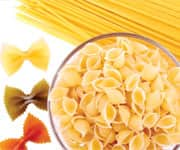 |
Sorghum helps control blood sugar levels by:
- Reducing the release of sugar found in starch by inhibiting the enzyme, alpha-amylase.38,39
- Improving insulin sensitivity.41
- Reducing the manufacture of excess glucose in the liver (gluconeogenesis).19
- Activating the PPAR-gamma receptor to take up more blood glucose into energy producing cells.41
Natural Ingredient #2:
Sorghum Extract
Sorghum, a grass plant eaten in Egypt some 4,000 years ago and now cultivated in Africa and Asia, complements the sugar control benefits of mulberry by further improving insulin sensitivity and reducing gluconeogenesis, the creation of excess sugar molecules in the liver.19,37,38
At the earliest stages of starch digestion, sorghum inhibits the alpha-amylase enzymes that break down starch into sugar for absorption.39,40 This means that less starch ends up as sugar in your bloodstream. Sorghum has also been shown to reduce the digestibility of starch molecules thus minimizing uptake as sugar.41
Researchers have recently discovered another mechanism behind sorghum’s ability to reduce blood sugar levels. Sorghum activates the beneficial metabolic “thermostat” called PPAR-gamma. In the body, PPAR-gamma is a receptor that regulates glucose metabolism.38 When sorghum activates PPAR-gamma, glucose is removed from the bloodstream and more effectively utilized by muscle cells and the liver.38 PPAR-gamma also reduces the over-production of insulin by the pancreas, causing blood sugar levels to drop without an increase in insulin secretion.38
Sorghum extract appears to target PPAR-gamma to help support blood sugar levels somewhat differently than “glitazone” drugs. While glitazone drugs activate existing PPAR-gamma, sorghum increases its genetic expression, which then naturally results in more beneficial PPAR-gamma in the body’s tissues.38 More PPAR-gamma might equal better blood sugar control.
Sorghum provides another important benefit—it has been shown to reduce body fat. In an experimental study involving a high-fat diet, sorghum resulted in reductions of both blood sugar and insulin. The animals that were fed sorghum lost body fat and had reduced blood levels of lipids.38 Animals not receiving sorghum did not show the notable drops in blood sugar and insulin.38
This weight loss effect may be due in part to sorghum’s inhibition of fat cell development—an effect opposite to that produced by PPAR-activating drugs.42,43 Further research needs to better clarify if sorghum has potent weight-loss effects in adult humans.
Sorghum Reduces Excess Sugar Production In The Liver
Your liver can significantly raise your blood sugar level by producing excess glucose even though there is already enough sugar in your bloodstream.
Sorghum slows down the liver-induced gluconeogenesis—a process that can be especially problematic for diabetics.19 The result is less new glucose entering the blood.19 This beneficial mechanism of controlling sugar production in the liver is similar to the anti-diabetes drug metformin.30
In experimental studies, sorghum not only reduces the amount of blood sugar entering the bloodstream, but helps improve performance on glucose tolerance tests.19 One such study gave sorghum to both healthy and experimentally-induced diabetic animals, while another group of diabetic animals were treated only by the anti-diabetic drug glyburide, which acts by increasing insulin secretion.19
Both the sorghum group and the glyburide group had reduced glucose levels, bringing glucose tolerance test results down to the healthy levels seen in non-diabetic animals.19 Sorghum, however, did not raise insulin levels like the sulfonylurea drug did.19
Excess insulin levels are associated with increased disease and mortality risk, including cardiovascular disease and certain cancers.1,3 This experiment showed that sorghum provided glucose control similar to the prescription sulfonlyruea drug glyburide without boosting insulin levels.19
Other research has shown that a compound found in sorghum reduces hemoglobin A1c, a critical marker of long-term glucose control.44,45
Phloridzin’s Mechanisms Of Action
 |
Phloridzin helps control blood sugar levels by:
- Blocking SGLT1 in the intestine, which then eliminates unabsorbed glucose from the body.47
- Blocking SGLT2 in the kidney, which eliminates glucose through the urine.49
Natural Ingredient #3:
Phloridzin
Phloridzin is a natural polyphenol heavily concentrated in the skin of an apple. Phloridzin lowers blood sugar and enhances insulin sensitivity in several unique ways that complement the actions of mulberry and sorghum extract.23,46-48
Phloridzin, has been used in diabetes research and has a low incidence of side effects.49
Phloridzin Inhibits SGLT1 And SGLT2
One of the ways in which phloridzin reduces sugar in your blood is to inhibit the “carrier proteins” that absorb glucose from your intestine and kidney.46 By stopping these carrier molecules from absorbing sugar into your bloodstream, the sugar is safely passed out of the body without being used.
Phloridzin inhibits two of these sugar carrier molecules called SGLT1 and SGLT2.46 Blocking SGLT1 prevents glucose absorption from the intestine, while blocking SGLT2 prevents it from being returned to the blood from urine forming in the kidney.
Phloridzin primarily inhibits SGLT1 in the intestine, thereby preventing glucose from being absorbed and entering the bloodstream. Eventually, the undigested sugar is flushed away.47
Inhibiting SGLT1 lowers the glycemic impact right from the beginning of the digestive process and reduces the dangerous after-meal glucose spike that’s associated with increased cardiovascular risk.17 Since phloridzin blocks sugar uptake from the intestine, the sugar never gets a chance to spike in your blood following a meal.47 Experimental data show that phloridzin causes significant reductions in postprandial (after-meal) blood sugar levels, with a reduction in the excessive drinking and urination that are typical in diabetes.46
Phloridzin normalizes blood glucose in experimental models of diabetes, restoring insulin sensitivity in cells and living tissues.23,46-48 Phloridzin also inhibits SGLT2 in the kidney, but to a far lesser extent than many pharmaceutical drugs currently undergoing intensive research and development.49 Phloridzin has been shown to decrease food consumption and body weight in diabetic animals.46 Future research needs to evaluate if phloridzin’s weight loss effects are also effective in humans.

Summary
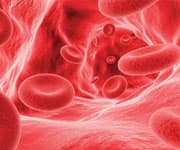
As we age, most of us experience rising blood sugar levels that cause or contribute to the development of degenerative disease.1
Using data collected from around the world, researchers have identified three natural glucose management ingredients: mulberry leaf extract, sorghum extract, and phloridzin. When combined, these plant extracts offer a broad spectrum of glucose control mechanisms.
Mulberry leaf extract contains the compound DNJ that impedes sugar-starch from being broken down as readily by the alpha-glucosidase enzyme.24 Additionally, mulberry reduces the formation of excess glucose in the liver.29
Another way that mulberry extract lowers blood sugar levels is by stimulating the sugar transport molecule known as GLUT4, a similar mechanism manifested by the anti-diabetes drug metformin.21,35 GLUT4 beneficially facilitates glucose uptake by critical cells and tissues of the body for energy.
Sorghum is a grass found in Asia that naturally activates PPAR-gamma thereby regulating glucose metabolism.38 Sorghum can reduce the amount of excess sugar molecules that your liver creates (gluconeogenesis), which further limits the amount of sugar entering your bloodstream.19
Phloridzin, which is found in the bark of certain fruit trees, inhibits sugar carrier proteins SGLT1 and SGLT2.46 Both SGLT1 and SGLT2 are the intense focus of new drug development. By inhibiting the activity of these two sugar carrier molecules, phloridzin impedes absorption and promotes elimination of sugar from the body.23,46-48
Combined, mulberry leaf extract, sorghum extract, and phloridzin work on numerous key mechanisms to improve insulin sensitivity, reduce blood glucose levels, safely escort glucose out of the body, and reduce the creation of new glucose in the liver.
If your fasting glucose blood level is over 85 mg/dL, hemoglobin A1c over 5.0%, or a glucose tolerance test reads over 120 mg/dL, these three nutrients would be an important addition before every carbohydrate-containing meal.
If you have any questions on the scientific content of this article, please call a Life Extension® Wellness Specialist at 1-866-864-3027.
References
- Grundy SM. Pre-diabetes, metabolic syndrome, and cardiovascular risk. J Am Coll Cardiol. 2012 Feb 14;59(7):635-43.
- Available at: https://www.cdc.gov/diabetes/basics/quick-facts.html. Accessed October 28, 2013.
- Dankner R, Shanik MH, Keinan-Boker L, Cohen C, Chetrit A. Effect of elevated basal insulin on cancer incidence and mortality in cancer incident patients:the Israel GOH 29-year follow-up study. Diabetes Care. 2012 Jul;35(7):1538-43.
- Romaguera D, Norat T, Wark P, et al. Consumption of sweet beverages and type II diabetes incidence in European adults: results from EPIC-InterAct.Diabetologia. 2013 Jul;56(7):1520-30.
- Bjornholt JV, Erikssen G, Aaser E, et al. Fasting blood glucose: an underestimated risk factor for cardiovascular death. Results from a 22-year follow-upof healthy nondiabetic men. Diabetes Care. 1999 Jan;22(1):45-9.
- Nichols GA, Hillier TA, Brown JB. Normal fasting plasma glucose and risk of type II diabetes diagnosis. Am J Med. 2008 Jun;121(6):519-24.
- Ludwig DS. Examining the health effects of fructose. JAMA. 2013 Jul 3;310(1):33-4.
- Bray GA, Nielsen SJ, Popkin BM. Consumption of high-fructose corn syrup in beverages may play a role in the epidemic of obesity. Am J Clin Nutr.2004 Apr;79(4):537-43.
- Sánchez-Lozada LG, Le M, Segal M, et al. How safe is fructose for persons with or without diabetes? Am J Clin Nutr. 2008 Nov;88(5):1189-90.
- Tokita Y, Hirayama Y, Sekikawa A, et al. Fructose ingestion enhances atherosclerosis and deposition of advanced glycated end-products in cholesterol-fedrabbits. J Atheroscler Thromb. 2005;12(5):260-7.
- Konner M, Eaton SB. Paleolithic nutrition: twenty-five years later. Nutr Clin Pract. 2010 Dec;25(6):594-602.
- Available at: http://journals.cambridge.org/download.php?file=%2FPNS%2FPNS53_02%2FS0029665194000492a.pdf&code= d21e5951a68b9f6367d2aaa56a4c8e16. Accessed October 29, 2013.
- Zoungas S, Patel A, Chalmers J, et al. Severe hypoglycemia and risks of vascular events and death. N Engl J Med. 2010 Oct 7;363(15):1410-8.
- Available at: https://www.cdc.gov/diabetes/basics/quick-facts.html. Accessed October 29, 2013.
- Fuchs FD. Prehypertension: the rationale for early drug therapy. Cardiovasc Ther. 2010 Dec;28(6):339-43
- Kohen R, Nyska A. Oxidation of biological systems: oxidative stress phenomena, antioxidants, redox reactions, and methods for their quantification.Toxicol Pathol. 2002 Nov-Dec;30(6):620-50.
- Ceriello A, Taboga C, Tonutti L, et al. Evidence for an independent and cumulative effect of postprandial hypertriglyceridemia and hyperglycemia onendothelial dysfunction and oxidative stress generation: effects of short- and long-term simvastatin treatment. Circulation. 2002 Sep3;106(10):1211-8.
- Kawano H, Motoyama T, Hirashima O, et al. Hyperglycemia rapidly suppresses flow-mediated endothelium-dependent vasodilation of brachial artery. J Am Coll Cardiol. 1999 Jul;34(1):146-54.
- Kim J, Park Y. Anti-diabetic effect of sorghum extract on hepatic gluconeogenesis of streptozotocin-induced diabetic rats. Nutr Metab (Lond). 2012;9(1):106.
- Kimura T, Nakagawa K, Kubota H, et al. Food-grade mulberry powder enriched with 1-deoxynojirimycin suppresses the elevation of postprandial blood glucosein humans. J Agric Food Chem. 2007 Jul 11;55(14):5869-74.
- Naowaboot J, Pannangpetch P, Kukongviriyapan V, Prawan A, Kukongviriyapan U, Itharat A. Mulberry leaf extract stimulates glucose uptake and GLUT4translocation in rat adipocytes. Am J Chin Med. 2012;40(1):163-75.
- Li YG, Ji DF, Zhong S, et al. Hybrid of 1-deoxynojirimycin and polysaccharide from mulberry leaves treat diabetes mellitus by activating PDX-1/insulin-1signaling pathway and regulating the expression of glucokinase, phosphoenolpyruvate carboxykinase and glucose-6-phosphatase in alloxan-induced diabeticmice. J Ethnopharmacol. 2011 Apr 12;134(3):961-70.
- Kahn BB, Shulman GI, DeFronzo RA, Cushman SW, Rossetti L. Normalization of blood glucose in diabetic rats with phlorizin treatment reversesinsulin-resistant glucose transport in adipose cells without restoring glucose transporter gene expression. J Clin Invest. 1991 Feb;87(2):561-70.
- Kojima Y, Kimura T, Nakagawa K, et al. Effects of mulberry leaf extract rich in 1-deoxynojirimycin on blood lipid profiles in humans. J Clin Biochem Nutr. 2010 Sep;47(2):155-61.
- Lin AH, Lee BH, Nichols BL, et al. Starch source influences dietary glucose generation at the mucosal a-glucosidase level. J Biol Chem. 2012 Oct26;287(44):36917-21.
- Nakanishi H, Onose S, Kitahara E, et al. Effect of environmental conditions on the a-glucosidase inhibitory activity of mulberry leaves.Biosci Biotechnol Biochem. 2011;75(12):2293-6.
- Available at: http://www.medscape.com/viewarticle/432744_2.Accessed October 30, 2013.
- Tanabe K, Nakamura S, Omagari K, Oku T. Repeated ingestion of the leaf extract from Morus alba reduces insulin resistance in KK-Ay mice.Nutr Res. 2011 Nov;31(11):848-54.
- Andallu B, Varadacharyulu NC. Gluconeogenic substrates and hepatic gluconeogenic enzymes in streptozotocin-diabetic rats: effect of mulberry (Morus indica L.) leaves. J Med Food. 2007 Mar;10(1):41-8.
- Wang Z, Wang J, Chan P. Treating type II diabetes mellitus with traditional chinese and Indian medicinal herbs. Evid Based Complement Alternat Med. 2013;2013:343594.
- Available at: http://www.jci.org/articles/view/118803/files/pdf. Accessed October 30, 2013.
- Andallu B, Suryakantham V, Lakshmi Srikanthi B, Reddy GK. Effect of mulberry (Morus indica L.) therapy on plasma and erythrocyte membrane lipidsin patients with type II diabetes. Clin Chim Acta. 2001 Dec;314(1-2):47-53.
- Available at: http://www.rxlist.com/micronase-drug/clinical-pharmacology.htm. Accessed October 31,2013.
- Aramwit P, Petcharat K, Supasyndh O. Efficacy of mulberry leaf tablets in patients with mild dyslipidemia. Phytother Res. 2011 Mar;25(3):365-9.
- Zhai J, Liu CX, Tian ZR, Jiang QH, Sun YP. Effects of metformin on the expression of GLUT4 in endometrium of obese women with polycystic ovary syndrome.Biol Reprod. 2012 Aug 2;87(2):29.
- Sugimoto M, Arai H, Tamura Y, et al. Mulberry leaf ameliorates the expression profile of adipocytokines by inhibiting oxidative stress in white adiposetissue in db/db mice. Atherosclerosis. 2009 Jun;204(2):388-94.
- Available at: http://www.worldwatch.org/system/files/NtP-Africa’s-Indigenous-Crops.pdf. Accessed November 8, 2013.
- Park JH, Lee SH, Chung IM, Park Y. Sorghum extract exerts an anti-diabetic effect by improving insulin sensitivity via PPAR-gamma in mice fed a high-fatdiet. Nutr Res Pract. 2012 Aug;6(4):322-7.
- Hargrove JL, Greenspan P, Hartle DK, Dowd C. Inhibition of aromatase and alpha-amylase by flavonoids and proanthocyanidins from Sorghum bicolorbran extracts. J Med Food. 2011 Jul-Aug;14(7-8):799-807.
- Mulimani VH, Supriya D. Alpha amylase inhibitors in sorghum (Sorghum bicolor). Plant Foods Hum Nutr. 1993 Nov;44(3):261-6.
- Lemlioglu-Austin D, Turner ND, McDonough CM, Rooney LW. Effects of sorghum [Sorghum bicolor (L.) Moench] crude extracts on starch digestibility,estimated glycemic index (EGI), and resistant starch (Rs) contents of porridges. Molecules. 2012;17(9):11124-38.
- Park MY, Seo DW, Lee JY, et al. Effects of Panicum miliaceum L. extract on adipogenic transcription factors and fatty acid accumulation in 3T3-L1adipocytes. Nutr Res Pract. 2011 Jun;5(3):192-7.
- Celi FS, Shuldiner AR. The role of peroxisome proliferator-activated receptor gamma in diabetes and obesity. Curr Diab Rep. 2002 Apr;2(2):179-85.
- Muthulakshmi S, Saravanan R. Efficacy of azelaic acid on hepatic key enzymes of carbohydrate metabolism in high fat diet induced type II diabetic mice.Biochimie. 2013 Jun;95(6):1239-44.
- Farrar JL, Hartle DK, Hargrove JL, Greenspan P. A novel nutraceutical property of select sorghum (Sorghum bicolor) brans: inhibition of proteinglycation. Phytother Res. 2008 Aug;22(8):1052-6.
- Najafian M, Jahromi MZ, Nowroznejhad MJ, et al. Phloridzin reduces blood glucose levels and improves lipids metabolism in streptozotocin-induced diabeticrats. Mol Biol Rep. 2012 May;39(5):5299-306.
- Masumoto S, Akimoto Y, Oike H, Kobori M. Dietary phloridzin reduces blood glucose levels and reverses SGLT1 expression in the small intestine instreptozotocin-induced diabetic mice. J Agric Food Chem. 2009 Jun 10;57(11):4651-6.
- Osorio H, Bautista R, Rios A, et al. Effect of phlorizin on SGLT2 expression in the kidney of diabetic rats. J Nephrol. 2010 Sep-Oct;23(5):541-6.
- Perez Lopez G, Gonzalez Albarran O, Cano Megias M. Sodium-glucose cotransporter type II inhibitors (SGLT2): from familial renal glucosuria to the treatmentof type II diabetes mellitus. Nefrologia. 2010;30(6):618-25.
- Available at: http://www.drugs.com/sfx/acarbose-side-effects.html. Accessed November 4, 2013.
- Defronzo RA, Mehta RJ, Schnure JJ. Pleiotropic effects of thiazolidinediones: implications for the treatment of patients with type II diabetes mellitus.Hosp Pract (1995). 2013 Apr;41(2):132-47.
- Nissen SE, Wolski K. Effect of rosiglitazone on the risk of myocardial infarction and death from cardiovascular causes. N Engl J Med. 2007 Jun14;356(24):2457-71.
- Geisler SA, Felisberto-Junior AM, Tavoni TM, Carrara MA, Curi R, Bazotte RB. Participation of the liver gluconeogenesis in the glibenclamide-inducedhypoglycaemia in rats. Cell Biochem Funct. 2011 Mar;29(2):81-6.
- Campagnoli C, Berrino F, Venturelli E, et al. Metformin decreases circulating androgen and estrogen levels in nondiabetic women with breast cancer.Clin Breast Cancer. 2013 Dec;13(6):433-8.
- Shegem NS, Nasir AM, Jbour AK, Batieha AM, El-Khateeb MS, Ajlouni KM. Effects of short term metformin administration on androgens in normal men.Saudi Med J. 2002 Aug;23(8):934-7.
- Carlsen SM, Følling I, Grill V, Bjerve KS, Schneede J, Refsum H. Metformin increases total serum homocysteine levels in non-diabetic male patients withcoronary heart disease. Scand J Clin Lab Invest. 1997 Oct;57(6):521-7.
- Available at: http://www.mayoclinic.com/health/drug-information/dr601533/dsection=side-effects. Accessed November 4, 2103.
- Cefalu WT, Leiter LA, Yoon KH, et al. Efficacy and safety of canagliflozin versus glimepiride in patients with type II diabetes inadequately controlledwith metformin (CANTATA-SU): 52 week results from a randomised, double-blind, phase 3 non-inferiority trial. Lancet. 2013 Sep 14;382(9896):941-50.
- Wulffelé MG, Kooy A, Lehert P, et al. Effects of short-term treatment with metformin on serum concentrations of homocysteine, folate and vitamin B12 intype 2 diabetes mellitus: a randomized, placebo-controlled trial. J Intern Med. 2003 Nov;254(5):455-63.
- Aarsand AK, Carlsen SM. Folate administration reduces circulating homocysteine levels in NIDDM patients on long-term metformin treatment.J Intern Med. 1998 Aug;244(2):169-74.
- Lalau JD. Lactic acidosis induced by metformin: incidence, management and prevention. Drug Saf. 2010 Sep 1;33(9):727-40.

